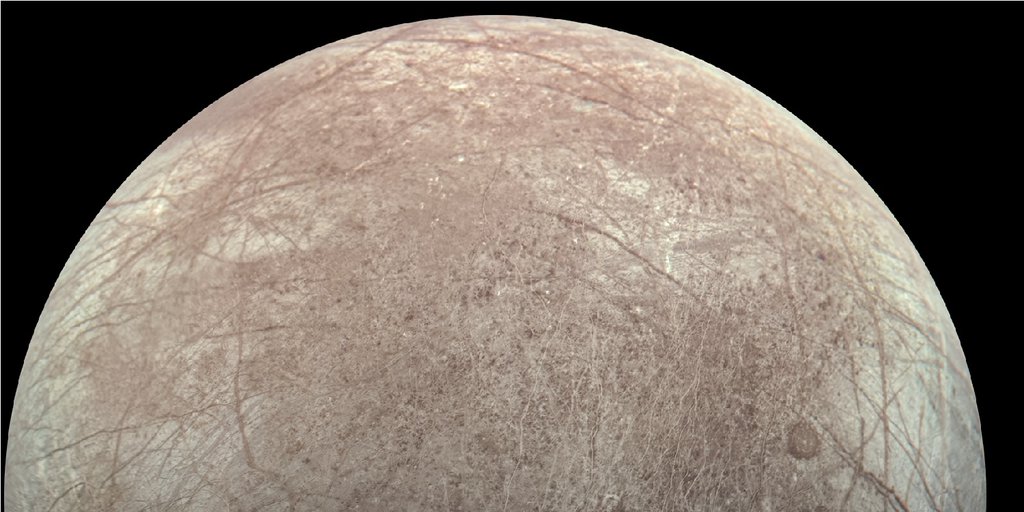Europa is one of Jupiter’s moons and arguably the most interesting one for scientists because it holds the best prospects for extraterrestrial life in the Solar System. So, it was a great day for science when the Juno spacecraft recently made a flyby over the icy moon and took detailed images of its surface.
Juno Took High-Resolution Photos of Europa
 The Juno spacecraft made the first close approach to Europa in 22 years and sent images taken during a flyby from 219 miles above the moon’s surface. This is closer than most satellites are to the surface of the Earth and is a great leap forward in the effort to learn more about the enigmatic world. At the same time, the flyby has moved the spacecraft into a tighter orbit with respect to Jupiter. In the first days of 2000, the Galileo mission marked the last time a spacecraft made a close approach to Europa as it swooped low over its icy surface. Europa is Jupiter’s fourth largest moon, and scientists have such great interest in it because it has a great ocean that seems to contain twice as much water as all of Earth’s oceans. This ocean is believed to be unfathomably deep and considered the most promising place to look for life beyond Earth.
The Juno spacecraft made the first close approach to Europa in 22 years and sent images taken during a flyby from 219 miles above the moon’s surface. This is closer than most satellites are to the surface of the Earth and is a great leap forward in the effort to learn more about the enigmatic world. At the same time, the flyby has moved the spacecraft into a tighter orbit with respect to Jupiter. In the first days of 2000, the Galileo mission marked the last time a spacecraft made a close approach to Europa as it swooped low over its icy surface. Europa is Jupiter’s fourth largest moon, and scientists have such great interest in it because it has a great ocean that seems to contain twice as much water as all of Earth’s oceans. This ocean is believed to be unfathomably deep and considered the most promising place to look for life beyond Earth.
Juno Carries a Camera and Other Instruments
 Juno’s new images will probably be studied for a long time, just like those made by Galileo, and launch hundreds of scientific papers. Another spacecraft isn’t expected to make a close approach to Europa in at least eight years, so scientists will certainly look at every detail with interest. The JunoCam has produced high-resolution images of 0.6 miles per pixel and astronomers expect to learn a lot from the new observations.
Juno’s new images will probably be studied for a long time, just like those made by Galileo, and launch hundreds of scientific papers. Another spacecraft isn’t expected to make a close approach to Europa in at least eight years, so scientists will certainly look at every detail with interest. The JunoCam has produced high-resolution images of 0.6 miles per pixel and astronomers expect to learn a lot from the new observations.
In addition to its JunoCam, the spacecraft has other instruments that can produce images from the ultraviolet, radio, and microwave parts of the spectrum. It also carries gravity sensors and high-energy particle detectors that will send important data back to Earth.